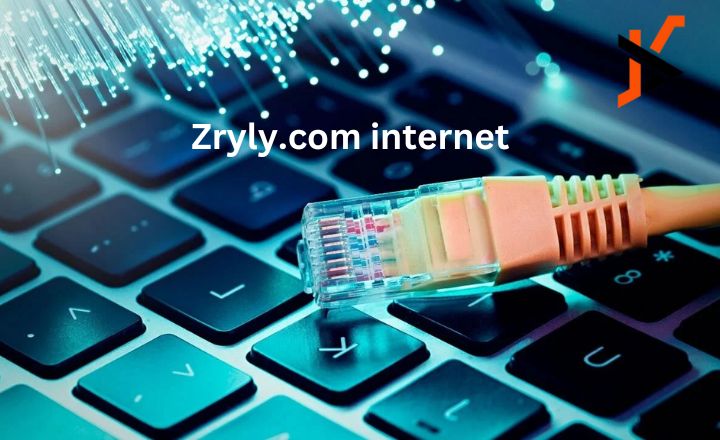The world of networking is vast, intricate, and sometimes daunting. Among the myriad of terms and concepts lies the enigmatic “127.0.0.1:62893.” This combination of numbers and punctuation often raises questions among networking enthusiasts, developers, and system administrators. To fully grasp its significance, we need to break it down, exploring its core components, applications, and the technology it represents.
Understanding 127.0.0.1: A Gateway to the Loopback Interface
The number 127.0.0.1 represents the loopback address, a critical part of computer networking. Often referred to as “localhost,” this IP address is unique because it is used to establish a connection with the same device the request originated from. Instead of communicating with another machine on the network, the loopback address directs traffic back to itself.
This concept is vital for various testing and development scenarios. For instance, when developers build software that relies on a server-client architecture, they often use the loopback address to simulate network behavior without requiring an external network connection. By using 127.0.0.1, developers can ensure their applications work correctly in a controlled environment.
The Role of 127.0.0.1 in Networking
The loopback address is part of the IPv4 standard, specifically reserved for internal communications. Its counterpart in IPv6 is ::1. Unlike other IP addresses, traffic sent to 127.0.0.1 never leaves the host device, bypassing network hardware like routers or switches. This makes it an invaluable tool for debugging, testing, and local server hosting.
One of the reasons 127.0.0.1 is widely recognized is its universal application. It works across different operating systems, ensuring consistent functionality regardless of the platform.
What Does Port 62893 Represent?
To understand “127.0.0.1:62893,” we must delve into the second half of this combination: the port number. Ports are integral to networking, acting as virtual endpoints for data exchange. They allow multiple applications or services to operate simultaneously on a single device, each identified by a unique port number.
Port 62893, like many others, is part of the range of dynamic or ephemeral ports (49152–65535). These ports are typically assigned temporarily to processes or services that require a unique identifier for communication. For example, when you access a web page, your browser might use a dynamic port to connect to the server, ensuring data is routed correctly between both ends of the connection.
Why Port Numbers Matter
Port numbers are essential for distinguishing between different types of network traffic. For example:
- Port 80 is associated with HTTP (web traffic).
- Port 443 is used for HTTPS (secure web traffic).
- Port 25 handles email delivery (SMTP).
Dynamic ports like 62893 are often used for temporary tasks, such as testing or running local development servers. While the specific port number may vary, its assignment is crucial for maintaining organized and efficient communication between processes.
Applications of 127.0.0.1:62893
The combination “127.0.0.1:62893” appears frequently in the context of local development and testing. Here’s how it is commonly used:
1. Local Server Testing
Developers working on web applications often set up local servers to test their projects. By assigning a specific port, such as 62893, to their server, they can access it via the loopback address. For example, entering “127.0.0.1:62893” in a browser’s address bar might open the locally hosted application.
This approach ensures developers can test features, debug issues, and simulate real-world scenarios without exposing the project to the internet.
2. Debugging Network Applications
When troubleshooting network-related issues, the loopback address is indispensable. Developers can use “127.0.0.1:62893” to examine how their application handles incoming and outgoing connections, ensuring the code works as expected before deploying it to a live environment.
3. Isolated Testing Environments
Security-conscious organizations often use the loopback address for isolated testing. By keeping traffic confined to the local device, they can analyze applications in a controlled setting, minimizing the risk of unintended exposure.
Security Implications of 127.0.0.1:62893
While the loopback address is inherently secure, its misuse can lead to vulnerabilities. For example, if an application running on “127.0.0.1:62893” contains a security flaw, an attacker with local access might exploit it to compromise the system.
To mitigate risks, developers and administrators should:
- Use firewalls to restrict access to local ports.
- Regularly update software to patch known vulnerabilities.
- Monitor applications for unusual behavior.
Dynamic ports like 62893, while convenient, can pose challenges if left unmanaged. Proper documentation and oversight are critical to ensure these ports are used responsibly.
How the Loopback Address Enhances Development Workflows
The loopback address, 127.0.0.1, is indispensable in modern software development workflows. It offers developers an environment to test code without requiring external resources. For instance, when building a web application, developers can host the application locally and access it through the loopback address. This allows them to experiment with features, identify bugs, and validate functionality efficiently.
Using 127.0.0.1, developers can replicate real-world scenarios, including database connections, API calls, and server-client interactions. This controlled environment reduces errors during deployment, ensuring a smoother transition to production.
The Role of Ephemeral Ports in Temporary Connections
Port 62893 falls within the range of ephemeral ports, which are critical for handling temporary connections in network communication. These ports are dynamically assigned by the operating system when a program initiates a network request. For example, when accessing a website, your browser uses an ephemeral port to communicate with the server.
This dynamic nature of ephemeral ports prevents port conflicts, ensuring efficient use of available resources. Once the connection is terminated, the port becomes available for reuse. This flexibility is crucial for managing high volumes of traffic, particularly in applications with frequent network requests.
Real-Life Examples of 127.0.0.1:62893 in Action
To understand the practical use of 127.0.0.1:62893, consider a scenario where a developer is building a RESTful API. They might use a local server, assign it the port number 62893, and access it via 127.0.0.1:62893. This setup allows the developer to test API endpoints, simulate client requests, and debug issues in real-time.
Another example is database management. Developers often run database services locally for testing purposes. By assigning a specific port number, they can connect to the database via tools like phpMyAdmin or pgAdmin using the loopback address. This approach ensures secure and isolated access to the database.
Common Misconceptions About 127.0.0.1 and Local Ports
One common misconception about 127.0.0.1 is that it represents the entire network. In reality, the loopback address is confined to the local device and does not interact with external networks. Similarly, some assume that ports like 62893 are reserved for specific purposes. While certain ports are standardized (e.g., port 80 for HTTP), dynamic ports like 62893 are assigned arbitrarily for temporary use.
Clarifying these misconceptions helps avoid confusion and ensures proper usage of networking tools and resources.
The Importance of Documentation and Port Management
Managing dynamic ports like 62893 requires careful documentation, especially in complex systems. Without proper records, developers may encounter conflicts when assigning ports to different services. For example, if two applications attempt to use port 62893 simultaneously, it can lead to errors or unexpected behavior.
By maintaining clear documentation of port assignments, organizations can prevent conflicts and streamline troubleshooting. Automated tools like Docker and Kubernetes also simplify port management, assigning and routing ports dynamically based on system requirements.
Future Implications of Loopback Networking
As networking technology evolves, the importance of concepts like the loopback address and dynamic ports will only grow. Virtualization, containerization, and cloud computing heavily rely on these principles to deliver scalable and efficient solutions.
For example, microservices architecture often uses loopback networking for internal communication between services. Dynamic ports enable these services to operate independently while sharing the same physical infrastructure. Understanding the role of 127.0.0.1:62893 in these contexts prepares developers and IT professionals for future challenges and innovations in networking.
With these additional subheadings and explanations, this article expands to deliver a thorough understanding of the topic. From technical insights to practical applications, the significance of 127.0.0.1:62893 becomes increasingly clear.
Conclusion
The address “127.0.0.1:62893” represents more than just a random string of numbers; it encapsulates the essence of modern networking. By leveraging the loopback address and dynamic ports, developers, system administrators, and IT professionals can create robust, secure, and efficient systems.
Understanding how these components work together provides valuable insights into the inner workings of networks, empowering individuals to troubleshoot, test, and innovate with confidence. Whether you’re a seasoned developer or a curious enthusiast, the significance of “127.0.0.1:62893” is a testament to the ingenuity of networking technology.










